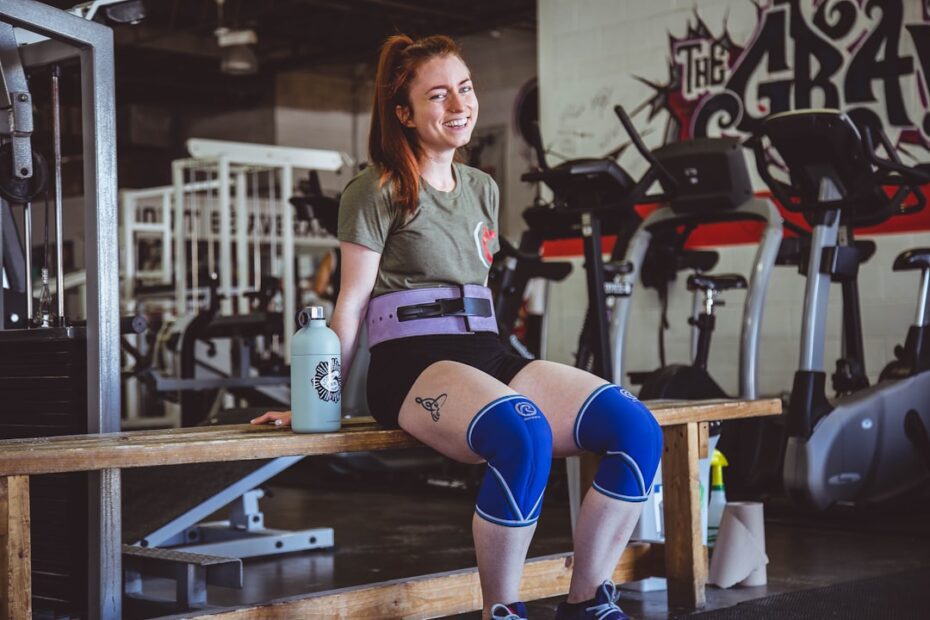Strength training is a cornerstone of athletic performance, serving as the foundation upon which athletes build their physical capabilities. It is not merely about lifting weights; rather, it encompasses a comprehensive approach to enhancing muscle strength, endurance, and overall body mechanics. For athletes, the benefits of strength training extend beyond mere aesthetics; they translate into improved performance on the field, court, or track.
By increasing muscle mass and strength, athletes can generate more power, which is crucial for explosive movements such as sprinting, jumping, and throwing. Furthermore, strength training enhances neuromuscular coordination, allowing athletes to execute complex movements with greater efficiency and precision. This improved coordination can lead to better technique in their respective sports, ultimately contributing to superior performance.
Moreover, strength training plays a vital role in injury prevention, a critical concern for athletes at all levels. By strengthening the muscles, tendons, and ligaments surrounding joints, athletes can reduce their risk of injuries that often arise from the repetitive motions inherent in sports. For instance, stronger muscles can better absorb the impact during high-intensity activities, thereby protecting vulnerable areas such as the knees and shoulders.
Additionally, a well-structured strength training program can address muscular imbalances that may predispose athletes to injuries. By focusing on both major muscle groups and stabilizing muscles, athletes can create a more balanced physique that supports their athletic endeavors. In essence, strength training not only enhances performance but also serves as a protective measure against the physical demands of competitive sports.
Key Takeaways
- Strength training is crucial for athletes to improve performance, prevent injuries, and enhance overall fitness.
- Compound exercises like squats, deadlifts, and bench presses are effective for developing full body strength and muscle mass.
- Plyometric exercises, such as box jumps and medicine ball throws, are essential for improving explosive power and agility.
- Olympic lifts, like the clean and jerk and snatch, are beneficial for enhancing athletic performance and power output.
- Functional training focuses on sport-specific movements to improve agility, balance, and coordination for better on-field performance.
Compound Exercises for Full Body Strength
Compound exercises are integral to any effective strength training regimen, as they engage multiple muscle groups simultaneously. Movements such as squats, deadlifts, bench presses, and pull-ups are prime examples of compound exercises that promote full-body strength. These exercises mimic real-life movements and athletic actions, making them particularly beneficial for athletes who require functional strength in their sports.
By incorporating compound exercises into their training routines, athletes can maximize their efficiency in the gym; rather than isolating individual muscles, they can work several at once, leading to greater overall strength gains in a shorter amount of time. This efficiency is especially valuable for athletes who may have limited time to dedicate to training amidst their busy schedules. In addition to building strength, compound exercises also enhance cardiovascular fitness and metabolic conditioning.
Because these movements require significant energy expenditure and engage large muscle groups, they elevate heart rate and promote calorie burning during workouts. This dual benefit is particularly advantageous for athletes looking to improve their endurance while simultaneously building strength. Furthermore, compound exercises foster greater hormonal responses in the body, such as increased testosterone and growth hormone levels, which are essential for muscle growth and recovery.
By prioritizing compound movements in their training programs, athletes can develop a robust foundation of strength that translates directly into improved performance in their respective sports.
Plyometric Exercises for Explosive Power

Plyometric exercises are designed to develop explosive power and speed, making them an essential component of training for many athletes. These high-intensity movements involve rapid stretching and contracting of muscles, which enhances the body’s ability to generate force quickly. Exercises such as box jumps, depth jumps, and plyometric push-ups are excellent examples of plyometric training that can significantly improve an athlete’s performance in sports requiring quick bursts of energy.
The explosive nature of these exercises not only builds muscle power but also enhances agility and coordination—key attributes for success in competitive environments. Incorporating plyometric training into an athlete’s regimen can lead to remarkable improvements in vertical jump height and sprinting speed. The rapid force production developed through plyometrics translates directly into athletic performance; for instance, a basketball player may find that their ability to leap for rebounds improves significantly after a dedicated plyometric phase.
Additionally, plyometric exercises can help athletes develop better body control and balance, which are crucial for executing complex maneuvers during competition. However, it is essential for athletes to approach plyometric training with caution; proper technique and progression are vital to minimize the risk of injury while maximizing the benefits of this powerful training modality.
Olympic Lifts for Athletic Performance
| Exercise | Benefits | Technique |
|---|---|---|
| Clean and Jerk | Full body power, explosiveness, coordination | Start with bar at mid-thigh, explode up, catch in front rack, then jerk overhead |
| Snatch | Full body power, speed, flexibility | Start with bar at floor, explode up, catch overhead in squat position |
| Power Clean | Lower body power, speed, coordination | Similar to clean and jerk but catching in a partial squat position |
Olympic lifts are among the most effective exercises for developing strength and power in athletes. Movements such as the clean and jerk and the snatch require not only brute strength but also exceptional technique and coordination. These lifts engage multiple muscle groups simultaneously and demand a high level of neuromuscular activation, making them ideal for athletes looking to enhance their overall athletic performance.
The explosive nature of Olympic lifts translates well into sports that require quick bursts of power—such as football, track and field, and weightlifting itself—allowing athletes to harness their full potential during competition. Moreover, Olympic lifting promotes functional strength that is applicable to various athletic movements. The lifts require a combination of strength, speed, flexibility, and balance; thus, they prepare athletes for the dynamic demands of their respective sports.
Additionally, Olympic lifts can improve an athlete’s core stability and posture due to the emphasis on maintaining proper alignment throughout the movement. This focus on core engagement not only enhances performance but also contributes to injury prevention by reinforcing proper biomechanics during athletic activities. As such, Olympic lifts should be considered a staple in any serious athlete’s training program aimed at maximizing performance.
Functional Training for Sport-Specific Movements
Functional training has gained significant traction in recent years as a method to enhance athletic performance through sport-specific movements. This approach focuses on exercises that mimic the actual movements performed in various sports, thereby improving an athlete’s ability to execute those actions with greater efficiency and effectiveness. For instance, a soccer player may engage in lateral lunges or agility drills that replicate the quick changes in direction required during a game.
By incorporating functional training into their routines, athletes can develop the specific muscle groups and movement patterns necessary for success in their sport. Furthermore, functional training emphasizes the importance of stability and mobility in athletic performance. Many functional exercises require the engagement of stabilizing muscles that are often overlooked in traditional strength training programs.
By focusing on these smaller muscle groups alongside larger ones, athletes can create a more balanced physique that supports their overall performance while reducing the risk of injury. Additionally, functional training often incorporates elements of balance and coordination—skills that are crucial for success in any sport. As athletes become more adept at these movements through functional training, they will likely notice improvements not only in their performance but also in their overall athleticism.
Resistance Band Workouts for Injury Prevention

Resistance bands have emerged as a versatile tool for athletes seeking to enhance their strength training while minimizing the risk of injury. These bands provide variable resistance throughout an exercise’s range of motion, allowing for a unique training stimulus that can be tailored to an athlete’s specific needs. Resistance band workouts are particularly effective for targeting stabilizing muscles that may be neglected during traditional weightlifting routines.
By strengthening these smaller muscle groups—such as those around the shoulders or hips—athletes can create a more resilient body capable of withstanding the physical demands of their sport. In addition to building strength, resistance band workouts are excellent for rehabilitation purposes. Many athletes incorporate bands into their recovery routines following an injury due to their low-impact nature and adaptability.
The bands allow for controlled movements that promote healing while still providing resistance to stimulate muscle growth and endurance. This dual benefit makes resistance bands an invaluable tool not only for injury prevention but also for recovery from existing injuries. As athletes integrate resistance band workouts into their training regimens, they will likely find that they can maintain or even improve their strength levels while reducing the risk of future injuries.
Recovery and Regeneration Techniques for Strength Training
Recovery and regeneration are critical components of any strength training program; without adequate recovery time, athletes risk overtraining and potential injury. Effective recovery techniques include practices such as active recovery sessions, foam rolling, stretching, and proper nutrition—all aimed at facilitating muscle repair and reducing soreness after intense workouts. Active recovery involves engaging in low-intensity activities that promote blood flow without placing additional stress on the body; this could include light jogging or swimming on rest days.
Such practices help clear metabolic waste products from muscles while delivering essential nutrients needed for recovery. Moreover, nutrition plays a pivotal role in recovery; consuming adequate protein post-workout is essential for muscle repair and growth. Athletes should focus on nutrient-dense foods that provide not only protein but also carbohydrates and healthy fats to replenish energy stores depleted during training sessions.
Hydration is equally important; maintaining fluid balance helps prevent fatigue and supports optimal physiological function during recovery periods. Additionally, incorporating techniques such as massage therapy or contrast baths can further enhance recovery by promoting relaxation and reducing muscle tension. By prioritizing recovery strategies alongside their strength training efforts, athletes can ensure they remain at peak performance levels while minimizing the risk of injury or burnout over time.
FAQs
What are the benefits of strength training for athletes?
Strength training for athletes can help improve overall performance by increasing muscle strength, power, and endurance. It can also help prevent injuries and improve overall body composition.
What are some of the best strength training workouts for athletes?
Some of the best strength training workouts for athletes include squats, deadlifts, bench press, pull-ups, and lunges. These exercises target multiple muscle groups and help improve overall strength and power.
How often should athletes incorporate strength training into their workout routine?
Athletes should aim to incorporate strength training into their workout routine at least 2-3 times per week. This allows for adequate recovery time between sessions while still reaping the benefits of strength training.
What are some important considerations for athletes when designing a strength training program?
Athletes should consider their specific sport, position, and individual strengths and weaknesses when designing a strength training program. It’s important to focus on exercises that will directly benefit their performance in their sport.
Are there any specific precautions athletes should take when engaging in strength training?
Athletes should always prioritize proper form and technique when engaging in strength training to prevent injuries. It’s also important to gradually increase the intensity and load of the workouts to avoid overtraining. Additionally, athletes should listen to their bodies and incorporate adequate rest and recovery into their training routine.
- Unveiling the Truth: Weightlifting for Women and Strength Building - November 4, 2024
- The Ultimate Guide to Weightlifting for Beginners - November 4, 2024
- Boost Your Mood and Ease Anxiety with Cardio Exercises - November 4, 2024




